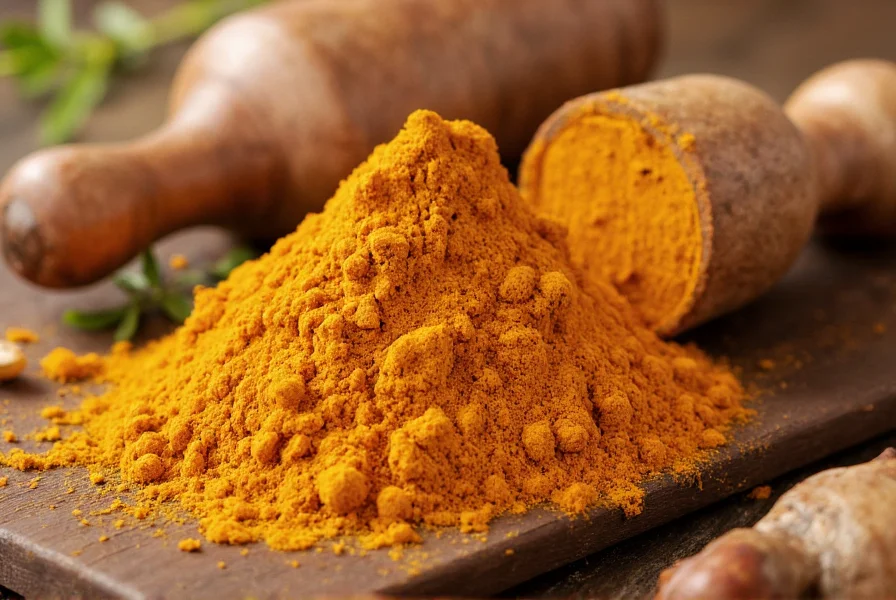Yes, turmeric is absolutely a spice. Specifically, it's a bright yellow-orange spice derived from the dried and ground root of the Curcuma longa plant, a member of the ginger family native to Southeast Asia and India.
When you ask is turmeric a spice, the answer is definitive: turmeric qualifies as a spice based on botanical and culinary definitions. Unlike herbs, which typically come from the leafy parts of plants, spices are derived from other plant components like roots, seeds, bark, or flowers. Turmeric specifically comes from the rhizome (underground stem) of the Curcuma longa plant, placing it firmly in the spice category alongside ginger, cinnamon, and cloves.
Understanding Turmeric's Classification as a Spice
The distinction between spices and herbs is crucial when determining is turmeric considered a spice. Herbs generally refer to the leafy green parts of plants used for flavoring, while spices come from other plant parts. Turmeric's origin as a root-based product makes it a classic example of a spice rather than an herb.
Historically, turmeric has been used as a spice for over 4,000 years in Indian cuisine and traditional medicine. Ancient Vedic texts from India reference turmeric as a culinary spice dating back to 500 BCE. Its journey from the Indian subcontinent to global kitchens demonstrates how what is turmeric classified as has remained consistent throughout history—a valuable spice prized for both flavor and color.
Turmeric vs. Herbs: Clearing the Confusion
Many people wonder about the difference between turmeric spice and herb classifications. The confusion often arises because:
- Turmeric comes from a plant with leafy green parts (which would be considered an herb)
- The fresh form resembles ginger root, which is also a spice
- It's used in both fresh and dried forms in cooking
However, when we examine is turmeric a spice or herb, the answer remains clear: only the root portion is used as a flavoring agent, which aligns with spice classification. The leaves of the turmeric plant are rarely used in Western cooking and don't define the plant's primary culinary application.
How Turmeric Functions as a Spice in Cooking
Understanding how to use turmeric as a cooking spice reveals why it's classified this way. As a spice, turmeric:
- Provides distinctive earthy, slightly bitter flavor
- Imparts vibrant yellow color to dishes
- Is typically used in dried, powdered form (though fresh root is also used)
- Works well in spice blends like curry powder
- Complements other spices rather than standing alone as a primary flavor
| Characteristic | Spices | Herbs |
|---|---|---|
| Plant Origin | Roots, seeds, bark, flowers | Leafy green parts |
| Turmeric Classification | Root (rhizome) | N/A |
| Flavor Intensity | Generally stronger | Generally more delicate |
| Storage | Dried form maintains potency longer | Fresh form preferred; dries lose potency faster |
Is Ground Turmeric the Same as Turmeric Spice?
When exploring is ground turmeric the same as turmeric spice, the answer is yes—ground turmeric is simply the most common commercial form of the spice. Turmeric spice can be found in several forms:
- Ground turmeric: Most common form, made by drying and grinding the rhizomes
- Fresh turmeric root: Increasingly available in supermarkets, used similarly to ginger
- Whole turmeric: Less common, requires grinding before use
- Concentrated extracts: Used in supplements rather than cooking
All these forms represent turmeric as a spice, with ground turmeric being the most widely used in everyday cooking. The fresh root form doesn't change its classification—it's still considered a spice because it's the root portion being used.

Nutritional Properties of Turmeric Spice
While primarily valued as a spice for its flavor and color, turmeric also offers notable properties that contribute to its enduring popularity. The compound curcumin gives turmeric its distinctive color and has been the subject of numerous studies. When considering turmeric root spice benefits, it's important to note that:
- Turmeric contains antioxidants and anti-inflammatory compounds
- It has been used in traditional medicine systems for centuries
- The spice form maintains these properties, though concentrations vary
- Black pepper significantly enhances curcumin absorption
These properties don't change turmeric's classification as a spice—they simply add to its value beyond basic flavoring.
Using Turmeric Effectively in Your Kitchen
Mastering how to use turmeric as a cooking spice can transform your dishes. Consider these tips:
- Start with small amounts—a little goes a long way due to its strong color and flavor
- Combine with black pepper to enhance both flavor and potential health benefits
- Add to oil first when cooking to help release its fat-soluble compounds
- Use in rice dishes, soups, stews, and marinades for color and flavor
- Store in an airtight container away from light to maintain potency

Storage Tips for Turmeric Spice
To maintain the quality of your turmeric spice, proper storage is essential. Ground turmeric typically retains its potency for 1-2 years when stored correctly, while fresh turmeric root lasts about 2 weeks in the refrigerator. For optimal freshness:
- Store in an airtight container away from heat and light
- Keep away from strong-smelling spices that might affect its flavor
- Buy in smaller quantities if you don't use it frequently
- Consider freezing fresh turmeric root for longer storage











 浙公网安备
33010002000092号
浙公网安备
33010002000092号 浙B2-20120091-4
浙B2-20120091-4